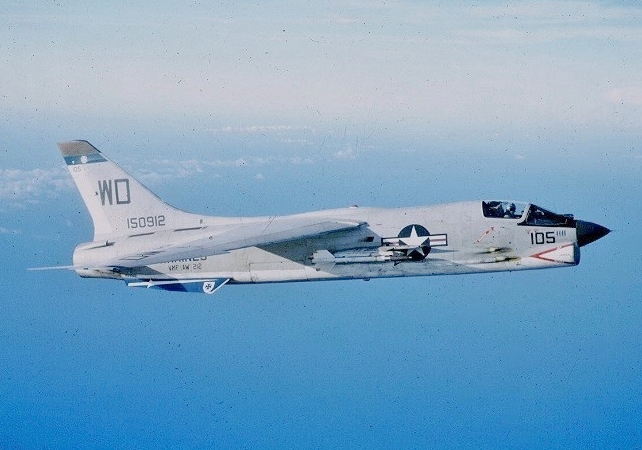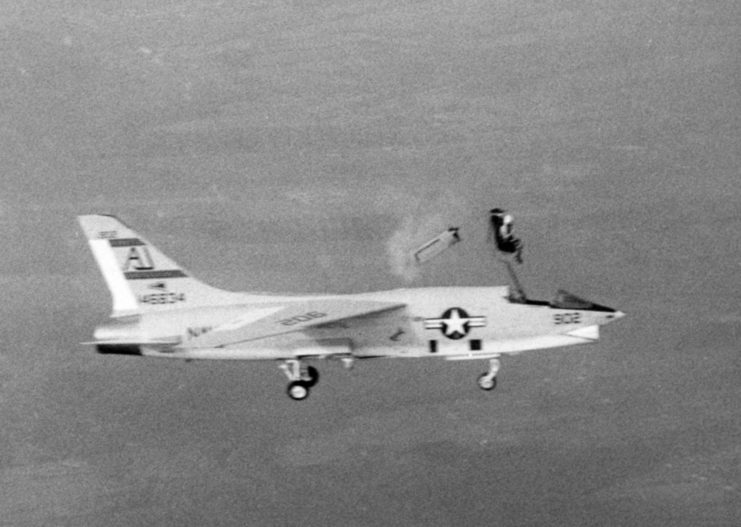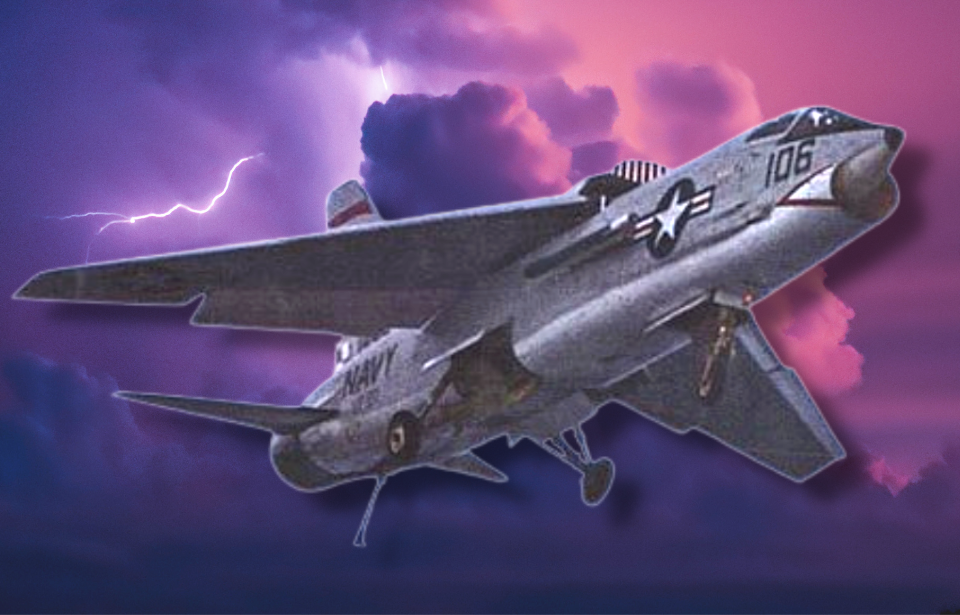In times of crisis, pilots may have to parachute out of their aircraft due to damage or mechanical failure. For the most part, these descents happen way under the clouds and the elements don’t prove to be a danger for pilots. It was a whole different story for US Marine Corps aviator William Rankin on July 26, 1959. The situation he found himself in on a trip back from Massachusetts is how he earned the nicknamed, “The Man Who Rode the Lightning.”
William Rankin was an experienced pilot

William Rankin had a long and successful career in the Aviation Wing of the US Marine Corps. He joined the Marines in 1940 at the age of 20 and served in both the Second World War and the Korean War.
In May 1957, Rankin became the commander of Marine Fighter Squadron 122 (VMP-122), the service’s first Vought F-8U Crusader squadron. It was a big moment not only for the aviator, but also for the Marine Corps, as the aircraft was its first supersonic fighter.
Flying from Massachusetts to South Carolina

On July 25, 1959, Lt. Col. William Rankin and US Navy Lt. Herb Nolan were tasked with performing a high-altitude navigational check on the F-8U. The first flight, which took them from Beaufort, South Carolina to Weymouth, Massachusetts, went off without a hitch.
The day after, the pair were to fly back to the now-Marine Corps Air Station Beaufort, South Carolina. The trip was much more rough. At around 47,000 feet, the duo were flying above severe weather, and the engine of Rankin’s F-8U suddenly quit with a jolt.
The pilot had flown in more than 100 missions during WWII and in Korea, so he didn’t panic. He attempted to pull his auxiliary power lever, but it broke off in his hand. He radioed to Nolan that he would have to eject. Unfortunately for Rankin, he was much higher than one would like to be when ejecting. The weather was also frigid, at between -58° and -65° Fahrenheit.
The Marine later told Time Magazine, “I had a terrible feeling like my abdomen was bloated twice its size. My nose seemed to explode. For 30 seconds I thought the decompression had me. It was a shocking cold all over. My ankles and wrists began to burn as though somebody had put dry ice on my skin. My left hand went numb. I had lost that glove when I went out.”
William Rankin’s ordeal continues

William Rankin’s parachute was set to deploy automatically when he reached 10,000 feet. He began falling through the storm he’d just flown over and the heavy winds forced his chute to open prematurely. Rankin fell at a relatively slow rate, during what one can only imagine was a terrifying ordeal. He told Time:
“I’d see lightning. Boy, do I remember that lightning. I never exactly heard the thunder; I felt it. I remember falling through hail, and that worried me; I was afraid the hail would tear the chute. Sometimes I was falling through heavy water — I’d take a breath and breathe in a mouthful of water. Sometimes I had the sensation I was looping the chute. I was blown up and down as much as 6,000 feet at a time.
“It went on for a long time, like being on a very fast elevator, with strong blasts of compressed air hitting you.”
Rankin was in about as good a shape as a man could be, but he was no match for the storm. The Marine aviator was thrown around like a rag doll and had to deal with the decompression that came with falling from such heights, which caused his ears, mouth, nose and eyes to bleed. He also suffered from nausea, throwing up while in the air.
After around 40 minutes of falling, Rankin was finally close to landing. However, as he came near the ground, his parachute got caught and he slammed into a tree. Despite the ordeal, he wasn’t severely injured. He was able to walk to a nearby country road and track down a car. An ambulance was called and he was taken for observation.
William Rankin becomes a minor celebrity

William Rankin quickly recovered from his injuries, which included frostbite, welts and bruises. Following his dashing escape from the storm, he became a bit of a celebrity in the United States and gave an interview to Time Magazine.
More from us: American Fighter Pilot Clarence “Bud” Anderson Was a World War II Triple Ace
In 1964, Rankin retired from the Marine Corps, four years after penning a book about his experience, titled The Man Who Road the Thunder. It inspired many a future pilot and remains popular to this day, with copies selling on eBay for anywhere from $85 to $300.
The Marine died in 2009 at the age of 88, leaving behind an incredible legacy.
